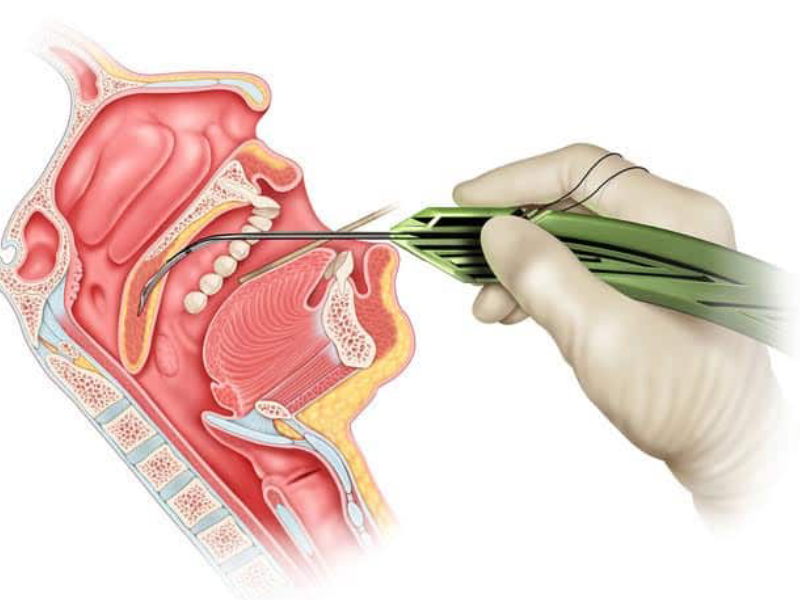
Snoring Surgery
What is Snoring Surgery?
Snoring surgery covers surgical procedures aimed at treating snoring and related sleep disorders by eliminating the narrowing of the upper respiratory tract during sleep. Snoring is not only a social problem, but can also be a symptom of diseases such as obstructive sleep apnea, which is a serious health problem.
What Causes Snoring?
Snoring usually occurs as a result of the narrowing of the airway, with the vibration of the soft palate, uvula, tonsils or adenoid. The main causes are:
In Which Cases Is Surgery Required?
The first step in the treatment of snoring is always lifestyle changes and, if necessary, the use of a device (for example, a CPAP device). However, in cases where these methods are insufficient, surgical intervention is considered. Situations where surgery is recommended:
Methods Used in Snoring Surgery
Surgical treatment varies depending on the location of the obstruction. The most commonly used methods are:
Post-Operative Process
Mild pain, difficulty swallowing or tenderness in the throat may usually be experienced for a few days after the surgery. The recovery process varies depending on the method used, but most patients return to their normal lives within a few weeks. With snoring surgery, both snoring decreases and night sleep becomes better quality.
Quieter Nights, a Healthier Life
Snoring surgery aims to solve not only snoring, but also snoring-related sleep disorders and health problems that affect quality of life. With the evaluation made by an expert ear, nose and throat physician, the most appropriate treatment method is determined, making more peaceful nights possible for both you and your environment.
Snoring surgery covers surgical procedures aimed at treating snoring and related sleep disorders by eliminating the narrowing of the upper respiratory tract during sleep. Snoring is not only a social problem, but can also be a symptom of diseases such as obstructive sleep apnea, which is a serious health problem.
What Causes Snoring?
Snoring usually occurs as a result of the narrowing of the airway, with the vibration of the soft palate, uvula, tonsils or adenoid. The main causes are:
- Dropping of the soft palate and uvula
- Enlargement of the tonsils and adenoids
- Nasal congestion (deviation, polyp, turbinate enlargement)
- Obesity and fat accumulation around the neck
- Retardation in the lower jaw structure (retrognathia)
- Sleeping position and alcohol use
In Which Cases Is Surgery Required?
The first step in the treatment of snoring is always lifestyle changes and, if necessary, the use of a device (for example, a CPAP device). However, in cases where these methods are insufficient, surgical intervention is considered. Situations where surgery is recommended:
- Diagnosis of severe snoring and/or sleep apnea
- Detection of anatomical obstructions
- No response to other treatment methods
- Serious deterioration of social and physical quality of life
Methods Used in Snoring Surgery
Surgical treatment varies depending on the location of the obstruction. The most commonly used methods are:
- Uvulopalatopharyngoplasty (UPPP): Shaping the soft palate and uvula
- Radiofrequency applications: Using low-energy heat to reduce tissue volume
- Adenoid and tonsil removal: Especially effective in children
- Intranasal surgeries: Procedures aimed at opening the airway, such as septoplasty and turbinate reduction
- Tongue base or lower jaw surgery: Preferred in more advanced cases
Post-Operative Process
Mild pain, difficulty swallowing or tenderness in the throat may usually be experienced for a few days after the surgery. The recovery process varies depending on the method used, but most patients return to their normal lives within a few weeks. With snoring surgery, both snoring decreases and night sleep becomes better quality.
Quieter Nights, a Healthier Life
Snoring surgery aims to solve not only snoring, but also snoring-related sleep disorders and health problems that affect quality of life. With the evaluation made by an expert ear, nose and throat physician, the most appropriate treatment method is determined, making more peaceful nights possible for both you and your environment.


